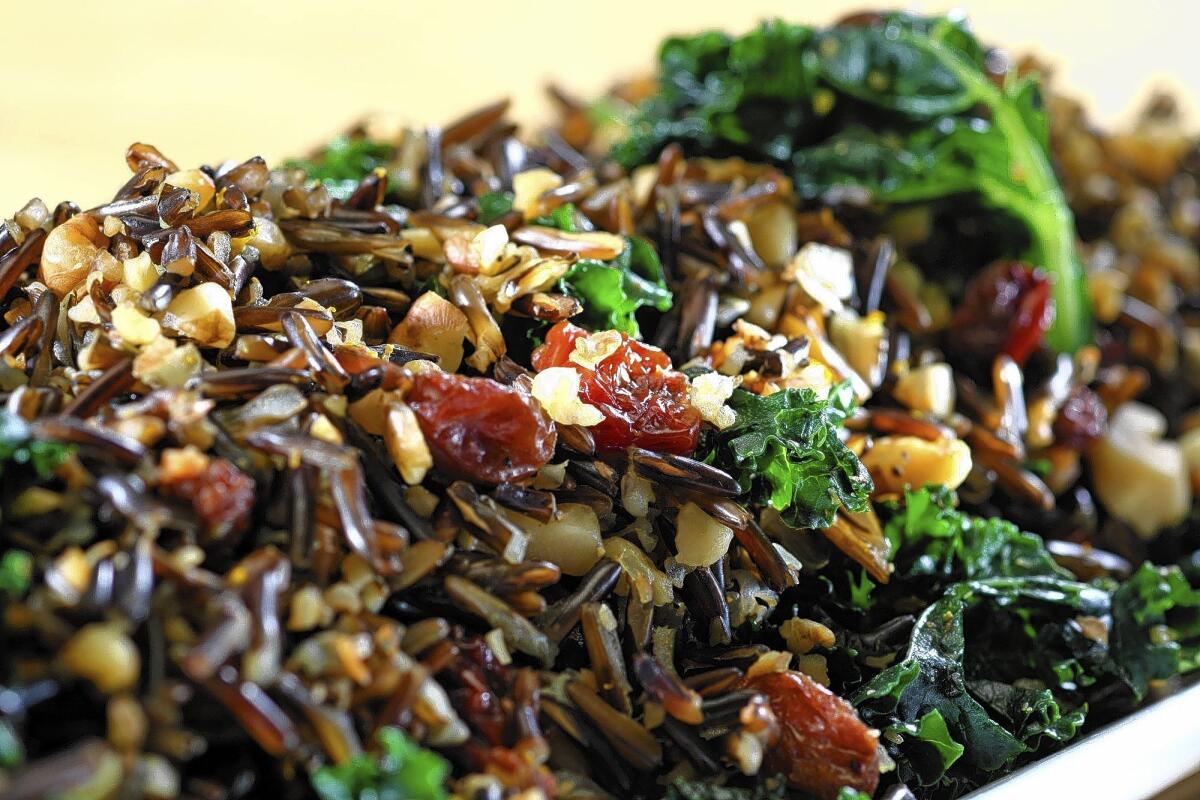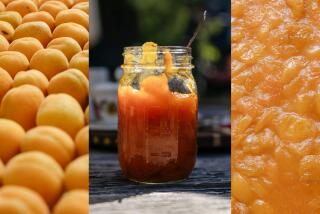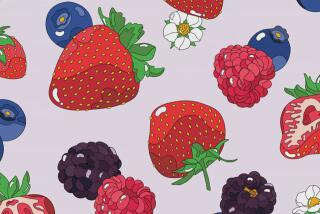California Cook: C’mon, give dried fruit a chance

I knew dried fruit had an image problem, but I had no idea how bad it had gotten.
Sure, I can kind of understand how prunes, er, “dried plums,” might have an issue — let’s face it, any time your marketing solution involves changing your product’s name entirely, well, things are tough.
But the other day, I was talking to Cooks County’s Roxana Jullapat, and she told me that in her restaurant, merely putting the word “raisin” on the menu was enough to kill sales for a dish completely. Interestingly, actually adding the raisins had no effect whatsoever. People seem to like them, just so long as they’re added on the down-low.
Truly, dried fruit has become the ingredient that dare not speak its name.
What’s weirdest about that is all the really good cooks I know love dried fruit. On Facebook recently, cookbook author Maria Speck (her “Ancient Grains” is terrific) polled colleagues about which dried fruits they had in their pantries. I was feeling pretty proud: dark and golden raisins, currants, apricots, cranberries, sour cherries, figs and prunes (yes, I call them prunes, and proudly!).
But when other cooks chimed in, there were so many others mentioned that I felt like a piker. How could I have overlooked apples, mangoes, bananas, blueberries, raspberries, strawberries, barberries … ? The list goes on and on.
So why do others hate them?
It wasn’t so very long ago that even raisins were regarded as exotic ingredients, reserved for special occasions only. Until the 1870s, almost all raisins had to be imported from Europe. It wasn’t until the birth of the gigantic vineyards of the Central Valley (located smack in the middle of one of the finest natural dehydrators known to man) that they began to become commonplace.
The Santa Clara Valley south of San Francisco proved to be just as hospitable for prunes. In the 1850s, a visitor brought over cuttings of the famed Agen prune trees from southwestern France; 50 years later there were more than 90,000 acres, almost all of them of that variety.
Indeed, before the Napa Valley became vinified, it was far better known for its prune orchards, and that’s much more recent history. In 1960, Napa’s prunes were more valuable than Napa’s grapes.
Do we take raisins, prunes and their like for granted today because they’ve become so familiar?
I certainly don’t. Dried fruit tastes too good to ignore just because of some silly fashion. Particularly at this time of year when there’s not a lot of sweetness to be had (produce-wise), dried fruit can come to the rescue in both savory dishes and desserts.
Think like a Sicilian and combine raisins with salty or pungent flavors. I made a pasta the other day with broccoli, salted anchovies, raisins and pine nuts. Or toss a handful of raisins into a kale and wild rice salad to offset the dark greens’ slight bitterness. (Steep them in warm water or brandy to soften a little before cooking.) Raisins or prunes are great with braised meats; just add them close to the end so they soften but don’t fall apart.
Sweets? Besides the obvious — scattering raisins in just about anything possible: cookies, cakes, puddings and even pie fillings — I always have a jar of prune compote in the refrigerator during the winter. Make a strong brew by cooking black tea in a simple syrup with spices and orange zest, and poach the prunes just long enough to soften them slightly. The slight bitterness of the tea and the perfume of orange balances the sweetness and warm spice.
Serve the prunes and their syrup with a spoonful of yogurt and you’ve got a terrific dessert that’s always on hand.
And if you love dried fruit as much as I do, you might even have them for breakfast.
More to Read
Eat your way across L.A.
Get our weekly Tasting Notes newsletter for reviews, news and more.
You may occasionally receive promotional content from the Los Angeles Times.











